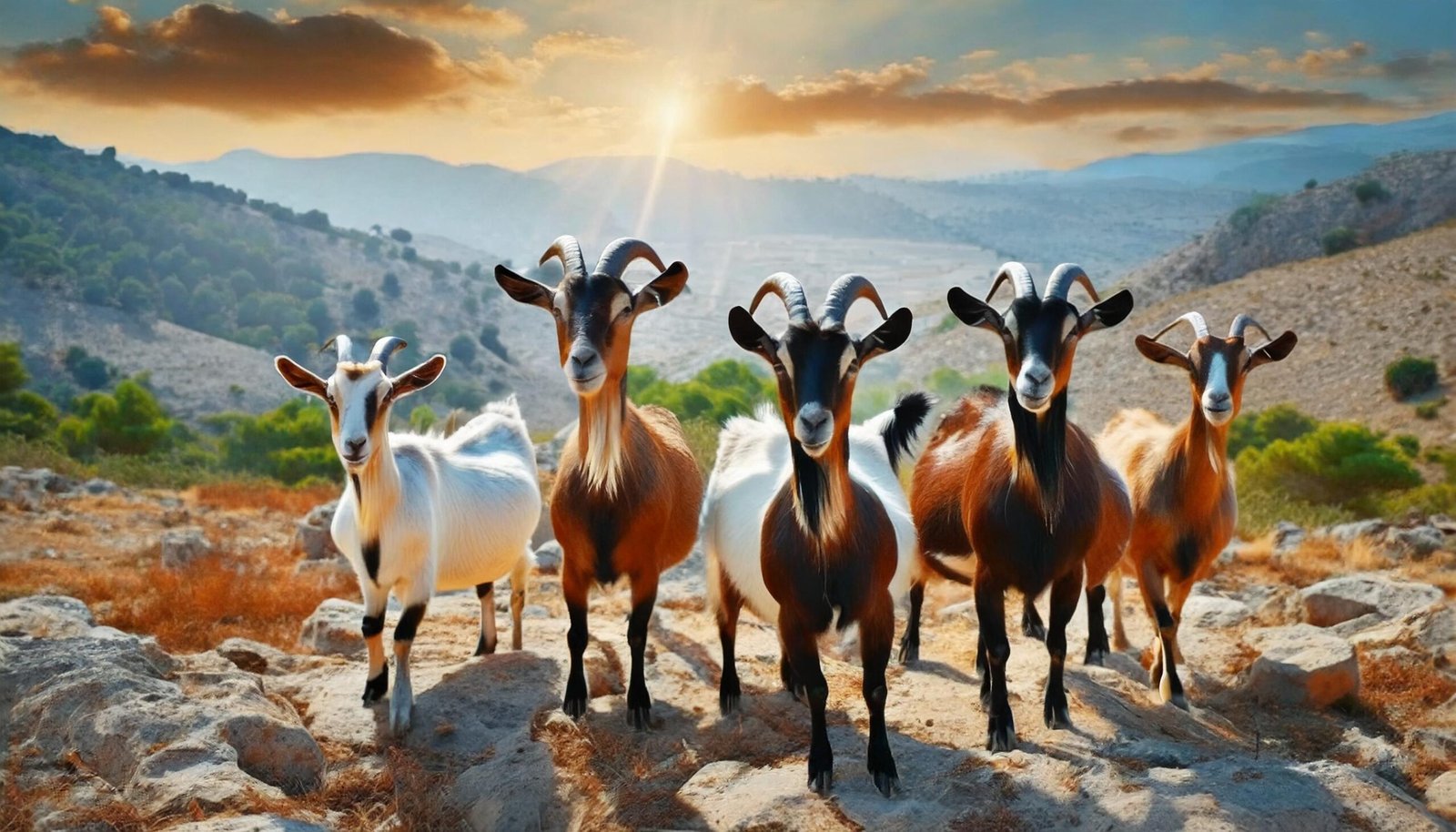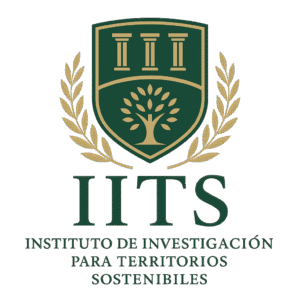Spain’s Andalusia region is known for its sun-drenched plains, diverse flora, and deep agricultural roots. Among its thriving livestock traditions, the Murciano-Granadina goat is prized for its exceptional dairy potential, resilience, and role in sustaining rural economies. But modern goat farmers face a twofold challenge: producing high-quality milk sustainably while mitigating the impacts of climate change.
To address this, Andalusian farmers are embracing a groundbreaking approach: Regenerative Grazing and Carbon Capture Systems tailored for the Murciano-Granadina breed. Launched in 2021, this innovative use case explores how carefully managed grazing can boost milk yields, restore soil health, and transform goat herds into active allies in capturing atmospheric carbon — helping Spain reach ambitious climate goals.
The Murciano-Granadina Goat: A Mediterranean Dairy Star
The Murciano-Granadina goat is a cornerstone of Spanish dairy farming. Its hardiness, high fertility, and excellent milk quality make it one of Europe’s most productive breeds, commonly yielding up to 148 liters of milk per month when raised under optimal conditions.
Traditional Andalusian goat farming often relies on open grazing in semi-arid landscapes, where poor grazing practices can lead to soil degradation, desertification, and loss of biodiversity. Regenerative grazing flips this script, using the goats themselves as tools for ecological restoration and carbon sequestration.
What is Regenerative Grazing with Carbon Capture?
Regenerative grazing is an approach inspired by nature’s patterns. Instead of continuous, unmanaged grazing that exhausts pastures, farmers rotate goats through paddocks in carefully timed intervals. This mimics the movement of wild herbivores, allowing grasses and soil microbiomes to recover between grazing periods.
Key features of this system include:
- High-intensity, short-duration grazing: Goats graze intensively for short bursts, naturally fertilizing the soil with manure.
- Long rest periods: After grazing, paddocks rest for weeks or months to regenerate.
- Diverse forage species: Multi-species cover crops increase root depth, soil fertility, and carbon storage.
- Adaptive management: Farmers use data on forage growth, rainfall, and goat health to adjust grazing patterns dynamically.
When executed well, regenerative grazing builds organic matter in soils, boosts water retention, and draws down CO₂ from the atmosphere — storing it underground where it enriches plant life.
Carbon Capture as a Climate Solution
Andalusia’s semi-arid regions are highly vulnerable to climate stress. By implementing carbon capture grazing systems, goat farmers contribute to carbon drawdown, converting degraded lands into living carbon sinks.
Soil scientists estimate that every additional 1% of organic matter in soil can store up to 20 tons of carbon per hectare. With proper grazing, Murciano-Granadina goats indirectly support this process, creating a virtuous cycle: healthier soil grows more forage, well-fed goats produce more milk, and enriched soils capture more carbon.
How the Initiative Works
Since 2021, the project has partnered with local cooperatives, environmental NGOs, and research institutions to roll out regenerative grazing pilots on Murciano-Granadina dairy farms. Key actions include:
- Farmer training: Workshops teach the principles of rotational grazing, forage planning, and soil health monitoring.
- Carbon baselining: Soil samples establish initial carbon levels, providing benchmarks for future gains.
- Digital tools: Farmers use mobile apps and satellite imagery to track pasture biomass and plan grazing rotations.
- Performance monitoring: Data on milk yields, goat health, and soil carbon levels is collected annually to measure impact.
This holistic system helps farmers maintain high milk productivity (148 L/month) while steadily improving their land.
Early Impacts and Sustainability
Results so far are promising:
- Pilot farms have reported up to 30% more forage growth in previously degraded paddocks.
- Soil tests show incremental increases in organic carbon within the first two years.
- Milk yields have remained strong, proving that sustainability doesn’t mean sacrificing productivity.
These outcomes support a top-tier sustainability score of 10, highlighting the synergy between economic, environmental, and social goals.
Co-Benefits: Beyond Carbon
While carbon capture is the flagship goal, regenerative grazing offers many additional benefits:
- Biodiversity revival: Healthier pastures support wildflowers, pollinators, and native bird species.
- Water resilience: Improved soil structure boosts water infiltration and reduces runoff during heavy rains.
- Community empowerment: Farmers become stewards of the land, reclaiming pride in traditional knowledge enhanced by modern ecological science.
- Market differentiation: Eco-friendly practices position Murciano-Granadina dairy products as premium, traceable, and climate-smart — attracting conscious consumers and export buyers.
Engaging Farmers and Communities
Adopting regenerative grazing represents a shift in mindset. To ease this transition, the project focuses on:
- Peer learning: Demonstration farms host field days where neighbors can see tangible results.
- Mentorship programs: Experienced regenerative farmers coach newcomers, sharing strategies for local soils and climates.
- Youth engagement: Schools and rural youth clubs visit farms to learn about soil, climate, and sustainability, inspiring the next generation of eco-farmers.
This inclusive approach ensures buy-in from the entire community, from elders who remember traditional rotational herding to young people bringing digital tools to the pasture.
Economic Upside
Contrary to the misconception that sustainability is costly, regenerative grazing can reduce input expenses:
- Less reliance on purchased feed due to healthier pastures.
- Lower veterinary costs, as diverse forages and stress-free grazing boost animal immunity.
- Potential for carbon credits: Some farms are exploring carbon offset markets to monetize their sequestration efforts.
These factors improve farm profitability, making the model financially attractive as well as ecologically sound.
Policy and Research Synergy
The project aligns with Spain’s national climate strategies and EU Green Deal goals. Insights from Andalusian pilots feed into larger research efforts on Mediterranean rangeland resilience and sustainable dairy production.
Regional policymakers are watching closely, considering incentives like grazing stewardship payments and carbon farming grants to scale the model to thousands of hectares across southern Spain.
Scaling Up: Next Steps
Building on early successes, the initiative plans to:
- Expand training to more cooperatives.
- Develop certification labels for “Carbon Positive Dairy.”
- Integrate IoT sensors for even finer grazing control.
- Publish open-access data to share lessons with farmers worldwide.
This ensures that Murciano-Granadina goats, once raised solely for milk and cheese, now play a starring role in fighting climate change.
A Model for Climate-Smart Dairy
The Regenerative Grazing and Carbon Capture use case exemplifies Andalusia’s innovative spirit. By harnessing the power of well-managed goats, farmers transform from passive producers to active ecosystem restorers.
This approach doesn’t just safeguard milk production — it revitalizes soils, secures rural livelihoods, and turns Andalusian pastures into frontline allies in the global climate fight.
For consumers and policymakers alike, this story is proof that traditional Mediterranean farming can adapt and thrive, blending centuries-old pastoral wisdom with the urgency of today’s climate challenges.


